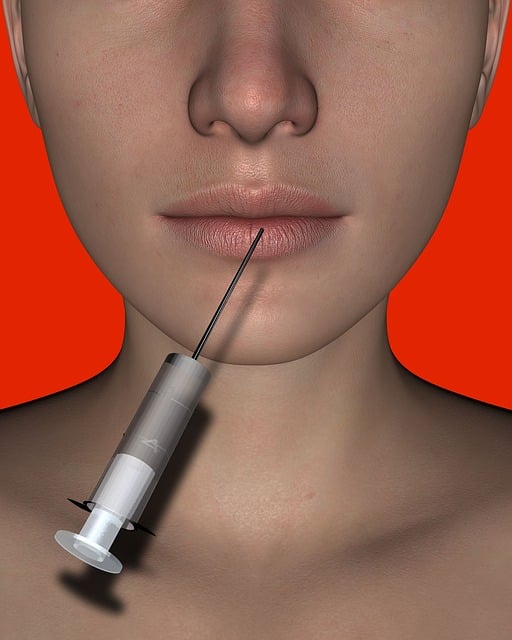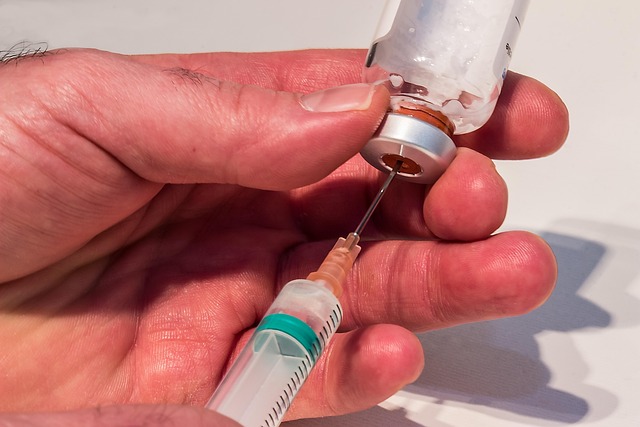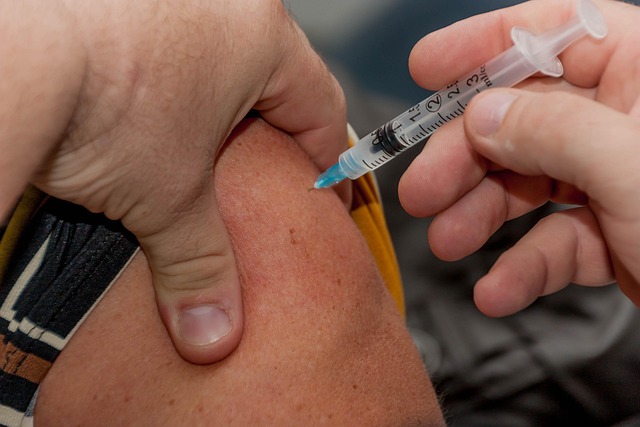Botox injections temporarily paralyze muscles causing forehead lines and wrinkles, offering 3-6 months of smoother skin. Choosing a reputable clinic with experienced professionals is crucial for safety and efficacy. Normal post-injection side effects include temporary redness, swelling, and sensitivity, resolving within 2-3 days. Regular maintenance extends results, with individual responses varying.
“Considered one of the most effective non-surgical treatments for forehead lines, Botox injections have emerged as a popular choice for achieving a youthful appearance. This article delves into the science behind Botox’s success in smoothing out dynamic wrinkles. We explore the various types of forehead lines, how Botox injections work to relax muscles and prevent creases, and the numerous benefits this treatment offers. Additionally, we guide you through the process, from choosing an accredited clinic to post-treatment care, ensuring a safe and successful experience with Botox injections.”
Understanding Forehead Lines: Causes and Types

Forehead lines, also known as glabellar lines or frown lines, are a common concern for many individuals seeking cosmetic enhancement. These fine lines and wrinkles form between the eyebrows due to various factors, primarily involving muscle activity and aging.
The primary cause of forehead lines is repeated contraction of the corrugator muscles, which are responsible for frowning. Over time, these contractions can lead to permanent creases in the skin. There are two main types: static lines, which are always present, and dynamic lines, which form temporarily when we furrow our brows. Botox injections have become a popular non-surgical solution to relax the corrugator muscles, thereby reducing the appearance of both static and dynamic forehead lines.
Botox Injections: How They Work for Forehead Lines

Botox injections have become a popular and effective non-surgical treatment for reducing forehead lines and wrinkles. The process involves injecting a small amount of botulinum toxin (Botox) into specific muscle groups in the forehead area. This powerful neurotoxin temporarily paralyzes the muscles, preventing them from contracting and causing the repeated furrowed brow or frown lines that lead to more pronounced wrinkles over time.
When Botox injections are administered by a qualified professional, it disrupts the communication between nerves and muscles, resulting in a relaxation of the treated area. This allows the skin to smooth out, reducing the appearance of fine lines and wrinkles. The effect is not instant; it takes about 24-72 hours for the treatment to fully kick in, and results can last anywhere from 3-6 months, depending on the individual’s metabolism and lifestyle factors.
Benefits of Botox Treatments for Forehead Wrinkles

Botox treatments for forehead wrinkles offer a range of benefits, making them a popular choice among those seeking non-invasive aesthetic solutions. One of the key advantages is their ability to significantly reduce the appearance of fine lines and wrinkles on the forehead, often considered one of the first areas to show signs of aging. By relaxing the muscles responsible for these expressions, Botox injections can prevent dynamic wrinkling, leaving skin looking smoother and more youthful.
Additionally, Botox treatments are known for their longevity, providing results that can last for several months with minimal maintenance. This makes them a cost-effective and convenient option compared to other cosmetic procedures. The non-surgical nature of the treatment also ensures a quick recovery time, allowing patients to resume their daily activities without significant downtime. Many individuals appreciate the subtlety of Botox, as it enhances their natural features rather than altering them dramatically.
Choosing the Right Clinic for Botox Forehead Injections

Choosing the right clinic is paramount when considering Botox injections for forehead lines. It’s crucial to opt for a reputable facility with experienced, board-certified dermatologists or plastic surgeons. Look for certifications and check patient reviews to ensure safety and efficacy. Reputable clinics maintain strict sterilization protocols and offer personalized consultations to understand your concerns and goals.
When selecting a clinic, consider factors like location convenience, staff expertise, and the type of Botox used. Ask about potential side effects, downtime, and follow-up care. A well-chosen clinic will provide a comfortable environment, address all your questions, and offer tailored solutions for achieving a youthful appearance without compromising your safety.
Recovery Process After Botox Treatment for Forehead Lines

After receiving Botox injections for forehead lines, it’s normal to experience some temporary redness and swelling. This is a natural part of the recovery process and usually subsides within a few hours to a couple of days. It’s important to avoid strenuous activities and direct sunlight during this time as it can exacerbate these side effects.
Patients should also be mindful of their touch, as the area might feel slightly sensitive or firm for a brief period. Ice packs can help alleviate any discomfort. Most individuals resume their regular routines within a day or two, but it’s recommended to schedule some downtime to allow the treated areas to heal properly and minimize the risk of complications from physical strain or overexposure to the sun.
Long-term Effects and Maintenance of Botox Results

Botox injections for forehead lines offer a significant aesthetic improvement, but understanding long-term effects is crucial. The results typically last between 3 to 6 months, after which the effect begins to wear off gradually. This is because Botox temporarily paralyses the muscles responsible for frowning and expression lines, and as these muscles regain strength, so do the lines return.
Regular maintenance injections can prolong the initial results and maintain a smoother forehead. However, it’s essential to remember that each person’s body responds differently to Botox, and individual experiences may vary. Consulting with a qualified medical professional is vital to determine an appropriate treatment plan and timeline based on your specific needs and desired outcomes.
